“This Is My Gospel”
Jesus Instructs the Twelve Disciples: 3 Nephi 27:1-28:12
Jesus Appears to the Twelve and Names His Church: 3 Nephi 27:1-12
Click here to listen to Jared Anderson’s podcast for this lesson and to read his notes.
In 3 Nephi 26:13 we learn that Jesus taught for the space of three days, yet, just as we are about to learn the details from Christ’s second-day sermon, Mormon is stopped short by Jesus’ command. In Mormon’s telling, Jesus never again appears to the multitude and we, like the Nephites, are left waiting. In place of the anticipated third-day discourse, Mormon inserts an account of a later, undated appearance to the twelve disciples which we read about in 3 Nephi 27-28.
“Just as Mormon has, at Jesus’ command, left readers wanting more content, so also we might wish for more clarity. Jesus’ teachings are neither simple nor straightforward; instead they offer a series of puzzles that invite reflection and interpretive effort. One useful approach is to imagine Third Nephi as a sort of alternative history (or, if one prefers, a thought experiment or a Christian fantasy). How would things have been different if the Jews in Palestine had read the Hebrew prophets in the same way that early Christians did, as pointing toward a future savior figure? What if they had recognized Jesus as their Redeemer and joined the church en masse? What if they had understood the law of Moses to be a set of temporary requirements prefiguring the atonement of Christ? This is exactly the situation of the Nephites in Bountiful” (Grant Hardy, Understanding The Book of Mormon: A Reader’s Guide, pg. 192)
27:5 “…take upon you the name of Christ…” See 3 Nephi 31:13 and Mosiah 5:8-9; 25:23. If Jesus is referring to these two scripture verses, then he must feel that the Nephite record is “scripture”. Is that a valid assumption?
27:3, 9 “Call” notice how the word “call” is used in two completely different ways.
The Gospel of Jesus Christ: 3 Nephi 27:13-22
I find the flow of the argument here quite interesting. Jesus takes the word “call” and initially uses it in the same sense that the Nephite apostles do (naming something). But he then says his church must not only be called by his name, but must also be built upon his gospel. He then takes the same word, “call” and uses it differently than he had before; the second use is much more of an action. He then re-introduces the concept of his Gospel but links it with calling upon God. After all of this, Jesus provides us with a clear definition of what is his “Good News”.
27:14 “…lifted upon the cross…”
“Jesus does mention his crucifixion once in a conversation with the twelve, but not in his sermons to the multitude (with an oblique reference to being “lifted up by the Jews” in 3 Nephi 28:6). Similarly, his voice from heaven preceding his bodily appearance had stated, “Behold, for such [those who repent and become as little children] I have laid down my life, and have taken it up again” (3 Nephi 9:22) (Hardy, Understanding the Book of Mormon, pg. 311, note 9).
27:22 This was the original chapter break (chapter XIII).
Records and Judgements: 3 Nephi 27:23-27
27:24 Clear commandment here is given to write a record of what has happened and what will happen in the future.
27:27 “…judges of this people…” see 1 Nephi 12:8-10
27:27 “…even as I am…”
I Am that I Am (אֶהְיֶה אֲשֶׁר אֶהְיֶה, ʾehyeh ʾašer ʾehyeh [ʔehˈje ʔaˈʃer ʔehˈje]) is a common English translation of the response God used in the Hebrew Bible when Moses asked for his name (Exodus 3:14). It is one of the most famous verses in the Torah. Hayah means “existed” or “was” in Hebrew; “ehyeh” is the first person singular imperfect form and is usually translated in English Bibles as “I will be” (or “I shall be”), for example, at Exodus 3:12. Ehyeh asher ehyeh literally translates as “I Will Be What I Will Be”, with attendant theological and mystical implications in Jewish tradition. However, in most English Bibles, this phrase is rendered as I am that I am.”
Ehyeh-Asher-Ehyeh (often contracted in English as “I AM”) is one of the Seven Names of God accorded special care by medieval Jewish tradition. The phrase is also found in other world religious literature, used to describe the Supreme Being, generally referring back to its use in Exodus. The word Ehyeh is considered by many rabbinical scholars to be a first-person derivation of the Tetragrammaton, see for example Yahweh.
Promises and Encouragement: 3 Nephi 27:28-33
27:29 compare with 3 Nephi 14:7-8
“The invitation in the Sermon at the Temple to “ask and it shall be given you “(3 Nephi 14:7) is reiterated again by Christ in 3 Nephi 27:28. In
short, Jesus wants to engage his people in an ongoing dialogue, and Third Nephi is designed to be, among other things , a conversation starter” (Hardy, Understanding the Book of Mormon, pg. 212).
27:30-31
“Jesus’ prophetic pedagogy, on the other hand [compared to how Mormon teaches by using history], aimed to produce a more resilient faith, a faith capable of withstanding doubts and temptations, one that transcends the historical moment. The situation is very different when the Nephites at Bountiful proclaim, “Hosanna! Blessed be the name of the Most High God!” (3 Nephi 11:17). These believers, having entered into a relationship with Christ, are permanently changed and never fall away” (Hardy, Understanding the Book of Mormon, pg. 213).
27:32 “…because of the fourth generation…”
Grant Hardy notes:
“Several prophets, including Jesus himself, had provided a fairly precise countdown to the final destruction, predicting that it wold occur four hundred years after Jesus’ visit to the New World, in the fourth generation( 1 Nephi 12:12-15; 2 Nephi 26:9-10; Alma 45:10, 12; Helaman 13:5, 9-10), yet Mormon never mentions this prophecy in his autobiography (which is quite at odds with his usual approach to reporting prophecies and their fulfillments). He seems to be in a state of denial, perhaps hoping that the prophecy would turn out to be conditional or reversible” (Hardy, Understanding the Book of Mormon, pg. 94).
27:32 “son of perdition” Perhaps this is referring to Judas Iscariot. See John 17:12.
27:32 “…that which moth doth corrupt….” Compare with 3 Nephi 13:19-20.
27:33 compare with 3 Npehi 14:13-14.
Jesus Grants the Individual Requests of the Twelve: 3 Nephi 28:1-12
28:6 see John 21:20-24
28:7, 9
“The Book of Mormon features a profusion of characters, many of whom speak and write. There is a great deal of direct discourse as well as numerous plates and records, and the embedded documents represent the most extensive examples of giving readers direct access to historical personalities. One result is that the sheer number of disparate voices can tend to disintegrate or fragment the unity of the text. Mormon helps us keep everything straight through headers and colophons, but in addition, he often incorporates phrases and embedded documents into adjacent narratives by way of preview or summary (in the former case, we must imagine that Mormon knew the contents of his sources before he copied them into his history). In this way he strengthens the overall coherence of his account. Here is one representative example:
Embedded document (Jesus’s instructions to the Twelve): “more blessed are ye [his three disciples], for ye shall never taste of death…and again, ye shall not have pain while ye shall dwell in the flesh, neither sorrow save it be for the sins of the world.”
The regular interplay between embedded documents and narrative paraphrases makes the Book of Mormon more than just a compilation of primary sources; it shows Mormon as a thoughtful, engaged editor who is consciously responding to and adapting the material at hand (Hardy, Understanding the Book of Mormon, pg. 147).
28:10 “…sit down in the kingdom of my Father…”
“Sit down…in the kingdom of God/heaven” originates with Matthew 8:11 and Luke 13:29, but the phrase is not pervasive in the Book of Mormon; rather, it seems to have been a favorite of Alma’s (Alma 5:24, 7:25, 29:17, 38:15)…The only other instances are from Amulek (Alma’s missionary companion) at Alma 34:36, Mormon at Helaman 3:30, and Jesus at 3 Nephi 28:10 (Hardy, Understanding the Book of Mormon, pg. 135, 302, note 25).
28:12 “…except for the three who were to tarry…” Here is a link to a fun blog called holyfetch.com which has a bunch of posts about the three Nephites; fun stuff.
[End of Jesus Instucts the Twelve Disciples: 3 Nephi 27:1-28:12]
[End of Jesus’ Teachings to the Nephites: 3 Nephi 11:1-28:12]
Mormon2 Writes of the Three Nephites: 3 Nephi 28:13-40
“…So after being directed away from what he himself had wanted to write (that is, additional details from the third day of Jesus’ ministry), Mormon instead describes a later visitation of Christ to his twelve Nephite disciples when they were instructed concerning the proper name of the church and essentials of the gospel, and then each was granted the desire of his heart; nine asked to enter God’s kingdom at the end of their lives, while the remaining three wished to escape death and continue their spiritual labors until judgment day. Perhaps out of habit, Mormon acknowledges the limits of his historical knowledge and his dependence on source documents:
“And now, whether they [the three] were mortal or immortal, from the day of their transfiguration, I know not; but this much I know, according to the record which hath been given – they did go forth upon the face of the land, and did minister unto all the people” (3 Nephi 28:17-18).
After a brief description of their efforts among the Nephites and the Lamanites, Mormon concludes Third Nephi with a final comment, full of revelation and prophecy (Hardy, Understanding the Book of Mormon, pg 210).
28:22 Grant Hardy notes: “These events happened between +210 and +230” (Grant Hardy, The Book of Mormon, A Reader’s Edition, pg. 545, note 22a). See the parallel passage in 4 Nephi 1:30-33
28:23 Perhaps this refers to 3 Nephi 27:22 or 27:31
28:24-30 This is one of four lengthy editorial interrputions by Mormon in Third Nephi. These are discrete, readlily identifiable sections, each of which contains the phrase “I make an end of my sayings/speaking” (3 Nephi 5:7-26; 10:11-19, 26:6-12; 28:24-30:2).
28:26 See Mormon 8:10-11
As far as I can tell, the following is the earliest mention of the three Nephites outside of the Book of Mormon. Click here to read the rest of the paper:
“But it was Apostle Orson Pratt who was the first, as far as Church records indicate, to call the attention of the whole Church membership to the possibility of an appearance of the Three. In a sermon delivered in Conference to the Saints assembled in the New Bowery on April 7, 1855 Pratt said:
“How pleasant-how glorious it would be, if we had proved ourselves in all things; if we had become pure in heart. . . . Yes; bow pleasing-how glorious it would be, could we see those three old Nephites whose prayers have ascended up, for something like 1800 years, in behalf of the children of men in the last days, and have them return to their old native land, and find the kingdom of God prepared and pure to receive them, and could we hear their teachings, and their voices lifted up in our midst. Then let us wake up, and be assured that just as soon ,as we prepare ourselves for these blessings, so soon they will be upon our heads. Do you suppose that these three Nephites have any knowledge of what is going on in this land? They know all about it; they are filled with the spirit of prophecy. Why do they not come into our midst? Because the time has not come. . . . The very reason they do not come amongst us is, because we have a work to do preparatory to their coming; and just as soon as that is accomplished they are on hand, and also many other good old worthy ancients that would rejoice our hearts could we behold their countenances, and hear them recite over the scenes they have passed through, and the history of past events, as well as prophecy of the events to come. How great and how precious are the promises of the Lord, contained in ancient revelation” (Orson Pratt JD II :263-264).
Here’s a teaser from a great Dialogue article entitled, “Freeways, Parking Lots, and Ice Cream Stands: The Three Nephites in Contemporary Society” (great title, right?) It has a quote from the first scholarly journal to mention the 3 Nephites:
IN THE 1892-93 ISSUE OF The Folk-Lorist, a publication of the old Chicago Folk-Lore Society, the Reverend David Utter, from Salt Lake City, published a short piece entitled “Mormon Superstition.” He recounted Mormon beliefs about Indians, summarized briefly the contents of the Book of Mormon, and then told how, according to this book, three of Christ’s new-world disciples called Nephites had been allowed to remain on earth until the Savior returned again. “Many of the saints now living,” wrote Reverend Utter,
“tell that they have, at different times, seen one or more of these three immortal “Nephites.” A daughter of Brigham Young, now a good Unitarian, has told me that her father told, with great and solemn pleasure, of an interview that he had with one of these remaining apostles in Liverpool, when he was there on a mission. The apostle met him at the chapel door, an old man with a long gray beard, made himself known, and spoke many encouraging and helpful words” (Utter 1892-93, 76). Click here to read the rest of this Dialogue article.
28:31
(Fourth editorial comment: 3 Nephi 28:24-30:2) This section begins rather abruptly, with another instance of the resurrected Jesus dictating the contents of the record:
“And now I, Mormon, make an end of speaking concerning these things for a time. Behold, I was about to write the names of those who were never to taste of death [agin, his historian inclination to detail, accuracy, and specificity], but the Lord forbade; therefore I write them not, for they are hid from the world. But behold, I have seen them, and they have ministered unto me (3 Nephi 28:24-26)
Imagine, for a moment,what this would have meant for Mormon the historian. After a span of three and a half centuries, he has access to eyewitnesses who were actually present when Christ taught the Nephites, men whom he could question and press fro explanations (Mormon 8:10-11). But Mormon does not pursue this, and he never identifies them as the source for any particular details in his account. His focus is now on the future, and he prophesies of how these three Nephites will operate largely unrecognized among the Gentiles and Jews to perform “great and marvelous works” (3 Nephi 28:31) (Hardy, Understanding the Book of Mormon, pg. 210).
28:33
“In 3 Nephi 28:33 we again sense his [Mormon] regret at mandated omissions:
“And if you had all the scriptures which give an account of all the marvelous works of Christ [i.e. those he was commanded not to pass on], ye would, according to the words of Christ, know that these things must surely come.”
As Mormon is transformed here from historian to prophet, he concludes his remarks with a sentence that, if read literally, marks the transition with some poignancy:
“And now I, Mormon, make an end of my sayings, and proceed to write the things which have been commanded me” (3 Nephi 26:12)” (Hardy, Understanding the Book of Mormon, pg. 209).
28:36-37
“This comment may provide a model of spiritual seeking and divine disclosure for readers to follow, but again, such a remark throws into disarray the cautions and limitations of historical research. Why would the past hold any mysteries at all for someone who could simply ask God to make up any gaps in the records? By this time, however, Mormon is in full prophetic mode:
“[W]hen the Lord shall see fit, in his wisdom, that these sayings shall come unto the Gentiles according to his word, then ye may know that the covenant which the Father hath made with the children of Israel…is already beginning to be fulfilled”(29:1).
He leaves behind historical generalizations such as “thus we see” and now pronounces the familiar prophetic formula “wo (be) unto him that…” (28:34, 29:5, 6, 7)” (Hardy, Understanding the Book of Mormon, pg. 211).
28:38 See the Grant Hardy note to 3 Nephi 28:7, 9 to understand the following:
Mormon’s summary: “that they might not taste of death there was change wrought upon their bodies, that they might not suffer pain nor sorrow save it were for the sins of the world.”
Mormon2‘s Admonitions: 3 Nephi 29:1-30:2
29:1 “…shall come unto the Gentiles…”
“Mormon, coming at the end of the Nephite civilization, is more aware that he is writing for people far removed from his time and culture, yet he also assumes that his primary readers will be latter-day Lamanites and only secondarily Jews and Gentiles. Twice, fairly late in his history, Mormon addresses brief comments to the Gentiles [here he is only repeating Jesus’ words]” (Hardy, Understanding the Book of Mormon, pg. 221)
29:1 “…the covenant which the Father hath made…” Grant Hardy notes: “It is remarkable how often Jesus specifies that covenants with Israel were made by the Father (see 3 Nephi 16:5, 11-12; 20:12, 29, 46 21:4, 7: 29:1). He also credits the Father with the covenant with Abraham (3 Nephi 20:25, 27)” (Hardy, Understanding the Book of Mormon, pg. 316, note 41).
29:2
“Aside from Old Testament quotations, generally associated with the end of times (Isaiah 11:4-9 / 2 Nephi 30:8-16; Malachi 3-4 / 3 Nephi 24-25), there are only four places in the entire Book of Mormon that directly reference the Second Coming or the Millennium: 1 Nephi 22:24-26; 3 Nephip 26:3; 28:7-9; and 29:2. Book of Mormon prophecies are concerned with general conditions in the last days rather than the culminating event that will bring them to a conclusion, and in particular, Third Nephi speaks much, much more about the gathering of Israel than about the Second Coming of Christ” (Hardy, Understanding the Book of Mormon, pg. 298, note 27)
29:5-7 The reference for these verses is uncertain.
29:8 See 3 Nephi 16:6-15; 20:29
“The second place where we can recognize Mormon’s voice is in several extended comment sections. These begin with Alma 48:11-20 and are not evenly distributed, becoming more frequent as Mormon moves toward the culmination of his history: Alma 50:19-23; Helaman 4:11-16; 12:1-16; 3 Nephi 5:8-26; 10:11-19; 26:6-14; 28:13-30:2. In these passages, Mormon begins to develop a comprehensive theory of historical change.
“In addition, these longer comments allow Mormon to reveal more of his mind as he shares with readers his circumstances and his intentions. In 3 Nephi 5:12, he first identifies himself by name, and thereafter in 3 Nephi 26:12, 28:24, and 4 Nephi 1:23, we encounter the phrase “I, Mormon.” Even so, he is a historian rather than a memoirist, so this usage is minimal compared with the eighty-eight times we read “I Nephi” in First and Second Nephi.
It is reasonable to ask why Mormon’s persona becomes more pronounced later in his abridgment of Nephite history. It may be that Joseph Smith, as the author, was developing a character as he went along, but it is striking that the level of direct narrator comment increases just at the time when the strong parallels exhibited in the narratives of the books of Mosiah and Alma diminish. Susan Taber noticed this transition from more literary to more didactic presentations and suggested that political turmoil was the cause:
“It seems likely that the conditions under which Mormon lived and wrote became so threatening that he no longer had the time or the inclination for the craftsmanship he employed in Mosiah. He seems concerned now with getting his story told by the quickest possible method,” even as “he no longer trusts the impact of the narrative alone to carry his message” (Susan Taber, “Mormon’s Literary Technique”, Mormon Letters Annual 1983, The Association for Mormon Letters, 1984, pg. 123-124).
There are other explanations – it may be that the closer Mormon’s history got to the self-destruction of the Nephites, the more urgent he felt his message to be, or perhaps some of the literary shaping of his narratives was adapted from his underling sources and he was simply following their lead, or he shifted his focus from parallels with the future events – but in any case, regardless of whether one looks for explanations within or without the framework of the narrative, constructing a coherent picture of the narrator is a crucial step in understanding the Book of Mormon” (Hardy, Understanding the Book of Mormon, pg. 99).
30:1-2 “Hearken, O ye Gentiles…”
“Third Nephi chapter thirty does not end in the measured language of a historian trying to make the best case possible based on his understanding of available sources. Mormon is now speaking in the name of the Lord, with the prophetic authority, oriented to the future rather than the past, and directed by God as to exactly what he should say. He has moved from the historian’s stance, knowing the beginning from the end, to the prophetic perspective, knowing the end from the beginning.
“Mormon’s new role as a prophet transcends his threefold agenda of history, literature, and morality, but it does not entirely supplant it. Jesus does not demean Mormon’s efforts as a conscientious historian (keep in mind the story of Jesus’ taking a personal interest in the accuracy of the Nephite records in 3 Nephi 23:6-14, where he instructed Nephi3 to add a notation concerning a fulfilled prophecy of Samuel’s that had been overlooked), but at the same time he decisively orders Mormon to cut his account short at 3 Nephi 26:11, suggesting that at this point the interests of the two audiences diverge, and for later readers a different approach was preferable”(Hardy, Understanding the Book of Mormon, pg. 211, 212).
30:2 “…and be baptized in my name…”
“The idea of personal redemption is not foreign to Third Nephi – baptism is mentioned regularly – but when Jesus speaks to the multitude at Bountiful, he most often emphasizes a different type of salvation: a corporate or collective redemption centered on the restoration of the House of Israel. What matters most, apparently, is one’s place within the story (and baptism becomes the means by which the Gentiles can be adopted into Israel; see see 3 Nephi 21:6). In the rest of the Book of Mormon, Christ is preeminently a personal savior whose atonement has made it possible for individuals to return to God, but as the resurrected Jesus defines his own role in Third Nephi, his primary task is to save a people, his people” (Hardy, Understanding the Book of Mormon, pg. 205).
30:2 “…be filled with the Holy Ghost…”
“The bestowal of the gift of the Holy Ghost, who will manifest truth to inquiring believers, is a major theme of Jesus’ teachings and is explicitly offered to latter-day Gentiles by Mormon – speaking the words of the Lord…This opportunity is mentioned at least four times in Third Nephi (16:13; 21:6, 22; 30:2) and Latter-day Saints take it quite literally. After baptism and confirmation by which they receive the gift of the Holy Ghost, they are encouraged to get a blessing from a church patriarch that will, among other personal promises and warnings, declare which tribe of Israel they belong to (or perhaps assigned to). Most discover that they are affiliated with Ephraim” (Hardy, Understanding the Book of Mormon, pg. 212, 315 – note 35).
FOURTH NEPHI:
THE BOOK OF NEPI, WHO IS THE SON OF NEPHI, ONE OF THE DISCIPLES OF JESUS CHRIST
A NEW SOCIETY: 4 NEPHI 1-18
vs. 8 see 3 Nephi 8:8; 9:3
vs. 6, 14 Here Mormon passes through over 10 years without any commentary. For me, this begs the question, why didn’t Mormon spend more time explaining why there was so much peace and what they did to maintain that peace?
“H.D.F. Kitto once wrote of Thucydides that, given the amount of source material available to him, “one of his chief preoccupations must have been to leave things out” (H.D.F. Kitto, Poesis: Structure and Thought, pg. 266). The Book of Mormon similarly asks us to imagine Mormon poring over piles of ancient records, able only to incorporate “a hundreth part” into his abridgment. Consequently, what he leaves out is often as important as what he chooses to include (even if there is an element of hyperbole in his repeated assertion). Determining what is not there can be a delicate business, but it is clear that Mormon gives more attention so some periods and themes than others. For instance, when he shifts the focus of his history to the people of Zeniff – a Nephite colony in the midst of Lamanite territory – we learn almost nothing of the contemporaneous reign of King Mosiah in Zarahemla, which was apparently very successful. This is in keeping with Mormon’s general disinclination to provide details about periods of social harmony – other examples include the mass conversion of the Lamanites in Helaman 5:50-52 (which led to a complete transformation of their society and indeed was much more miraculous than anything accomplished by the Sons of Mosiah in eleven chapters devoted to their missionary labors), as well as the two centuries of peace that followed Jesus’ appearance among the Nephites (dispensed by Mormon in just twenty-one verses). Either Mormon is not interested in the economy, politics, sociology, or religious practices of these periods or he doesn’t think this is what his readers most need to hear….[recounting all this] in just twenty-three verses, which makes it an assertion rather than history – and with no narrative or causal analysis, it is hard to understand what happened. There is little in Mormon’s report of Jesus’ teachings that points the way. Christ establishes a church, but the organizational details are missing. He offers no critique of social conventions, customs, or government (despite serous problems in the system established by Mosiah, which include a susceptibility to corruption and apparently no outlet for dissent except violence). He declares the Mosaic law is fulfilled and therefore no longer applicable, but he offers little in its place other than the broad principles of the Sermon on the Mount”(Hardy, Understanding the Book of Mormon, pg. 107, 183).
vs. 14 “…the three that should tarry…” see 3 Nephi 28:4-8
vs. 15, 16 I like the order in which Mormon puts things here. First – it was “the love of God which did dwell in the hearts of the people” that (in my summation) brought a true transformation. Second- it was the orthopraxy, expemplified by “no envyings, nor strifes, nor tumults, nor whoredoms…” So often in the contemporary church we get that order backwards. We focus on doing (orthopraxy) and not on the being transformed. I don’t remember where I heard this the other week, but I like it: “We are human-beings, not human-doings.”
vs. 16 I just love this part of the verse: “..and surely there could not be a happier people among all the people who had been created by the hand of God.” Compare with Alma 30:23. Grant Hardy notes that 4 Nephi 1:16 “sound(s) plaintive rather than descriptive” (Hardy, Understanding the Book of Mormon, pg. 97).
vs. 18 “…an hundred and ten years…and the first generation from Christ had passed away…” How are we supposed to interpret that? One generation is over 100 years? Or is he dating it from the time that Jesus appeared to the Nephites( approx. 34 years BCE) which would be about 110 years – 34 years = 76 years.
The Sources of Fourth Nephi: 4 Nephi 1:19-21
vs. 20 “…taken upon them the name of the Lamanites…” Here we find the label of “Lamanite” being used in a unique way. Here it is expressed as those who “…revolted from the church…”. Also of note, it is a name that those who revolted applied to themselves.
vs. 21 “…Plates of Nephi…book of Nephi…” Is this the first time that the name “book of Nephi” has been used by Mormon? Is he calling his condensed record taken from the Plates of Nephi, the book of Nephi? If so, who is the first to call Mormon’s record “The Book of Mormon”?
Divisions among the People: 4 Nephi 1:22-34
vs. 18, vs. 23 Notice how Mormon is using the word(s) “propered/prosperity” . In vs. 18, he gives no qualifier of what it means to prosper. However, in vs. 23, he qualifies it by attaching prosperity to being rich. What was Mormon teaching by omitting a prosperity qualifier in vs. 18 and having one in vs. 23?
vs. 23 “…I, Mormon…” This is one of only four places where Mormon identifies himself by name (see 3 Nephi 5:12; 26:12, 28:24). This usage is minimal compared with the eighty-eight times we read “I, Nephi” In First and Second Nephi (Hardy, Understanding the Book of Mormon, pg. 99).
vs. 26 “…build up churches unto themselves…” I believe Mormon is making a direct comparison to Jesus’ edict in 3 Nephi 27:4-6
vs. 27 see 3 Nephi 18:28-29
vs. 29 “the true church of Christ” Does Mormon’s use of the adjective “true” to mean there were churches which professed to be Christ’s church which were not? It makes me think that that Mormon’s reference to those “build[ing] churches unto themselves” (vs. 26) is an editorial comment by Mormon himself.
vs. 31 “…according to his word.” The reference here is uncertain.
vs. 30-33 parallel 3 Nephi 28:19-22
A Great Division: 4 Nephi 1:35-39
vs. 36-39 “Nephites…were true believers in Christ…” Here Mormon is further clarifying his re-definition of what a Nephite and Lamanite are ontologically. It is not about ancestry, but about belief. To read my post regarding the use of the word “Lamanite”, click here.
The Return of the Gadianton Robbers: 4 Nephi 1:40-46
vs. 42 Mormon makes it sound as if the Gadianton robbers (unlike what we found earlier in the Book of Mormon) start with the Lamanites, not the Nephites. I also get the impression that, although some called themselves Nephites and/or Lamanites, the people still existed together without any clear geographical separation.
vs. 44 “…began to sorrow for the sins of the world…” This is in direct fulfilment of 3 Nephi 28:9. The idea of sorrowing for the sins of others seems to be a very God-like attribute.
“The most remarkable religious document published in the nineteenth century may well be an ascension narrative in which the prophet Enoch is taken into heaven and records his ensuing vision. He sees Satan’s dominion over the earth, and Gods’ unanticipated response to a world veiled in darkness:
The God of heaven looked upon the residue of the people, and He wept; and Enoch bore record of it, saying: How is it that the heavens weep, and shed forth their tears as the rain upon the mountains? And Enoch said unto the Lord: How is it that thou canst weep? (Moses 7:28)
The question here is not about the reasons behind God’s tears. Enoch does not ask why do you weep, but rather how are your tears even possible, “seeing thou art holy, and from eternity to all eternity?” Clearly, Enoch, who believed God to be “merciful and kind forever,” did not expect such a being could be moved to the point of distress by the sins of His children. And so a third time he asks, “how is it thou canst weep?”
The answer, it turns out, is that God is not exempt from emotional pain. Exempt? On the contrary, God’s pain is as infinite as His love, He weeps because He feels compassion. As the Lord explains to Enoch,
unto thy brethren have I said, and also given commandment, that they should love one another, and that they should choose me, their Father; but behold, they are without affection, and they hate their own blood…and misery shall be their doom; and the whole heavens shall weep over them, even all the workmanship of mine hands; wherefore should not the heavens weep, seeing these shall suffer?”(Moses 7:33)
It is not their wickedness, but their “misery,” not their disobedience, but their “suffering,” that elicits the God of Heaven’s tears. Not until Gethsemane and Glogotha does the scriptural record reveal so unflinchingly the costly investment of God’s love in His people, the price at which He placed His heart upon them. There could be nothing in this universe, or in any possible universe, more perfectly good, absolutely beautiful, worthy of adoration, and deserving of emulation, than this God of love and kindness and vulenrability. That is why a gesture of belief in His direction, a decision to acknowledge His virtues as the paramount qualities of a divided universe, is a response to the best in us, the best and noblest of which the human soul is capable. A God without body or parts is conceivable. But a God without passions would engender in our hearts neither love nor interest. In the vision of Enoch, we find ourselves drawn to a God who prevenst all the pain he can, assumes all the suffering He can, and weeps over the misery He can neither prevent nor assume” (Fiona and Terrly Givens, The God Who Weeps: How Mormonism Makes Sense of Life, pg 24-25).
vs. 46 “After Christ’s visit, however, the pride cycle seems no longer operative; the wicked are prosperous and upturns in fortune can occur without repentance” (Hardy, Understanding the Book of Mormon, pg. 114).
The Records are Hidden: 4 Nephi 1:47-49
vs. 49 See 2 Nephi 28:2; Enos 1:13; 3 Nephi 21:2-4. Also see above note for 3 Nephi 29:1.

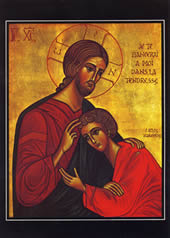
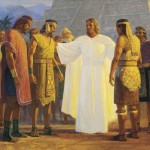
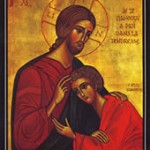
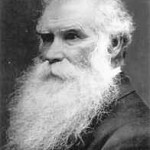
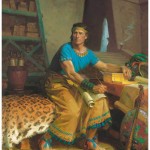




I really like your input more than Hardy’s notes. This was my favorite by far:
“I like the order in which Mormon puts things here. First – it was “the love of God which did dwell in the hearts of the people” that (in my summation) brought a true transformation. Second- it was the orthopraxy, expemplified by “no envyings, nor strifes, nor tumults, nor whoredoms…” So often in the contemporary church we get that order backwards. We focus on doing (orthopraxy) and not on the being transformed. I don’t remember where I heard this the other week, but I like it: “We are human-beings, not human-doings.” I’ll try to slip this in during GD today.